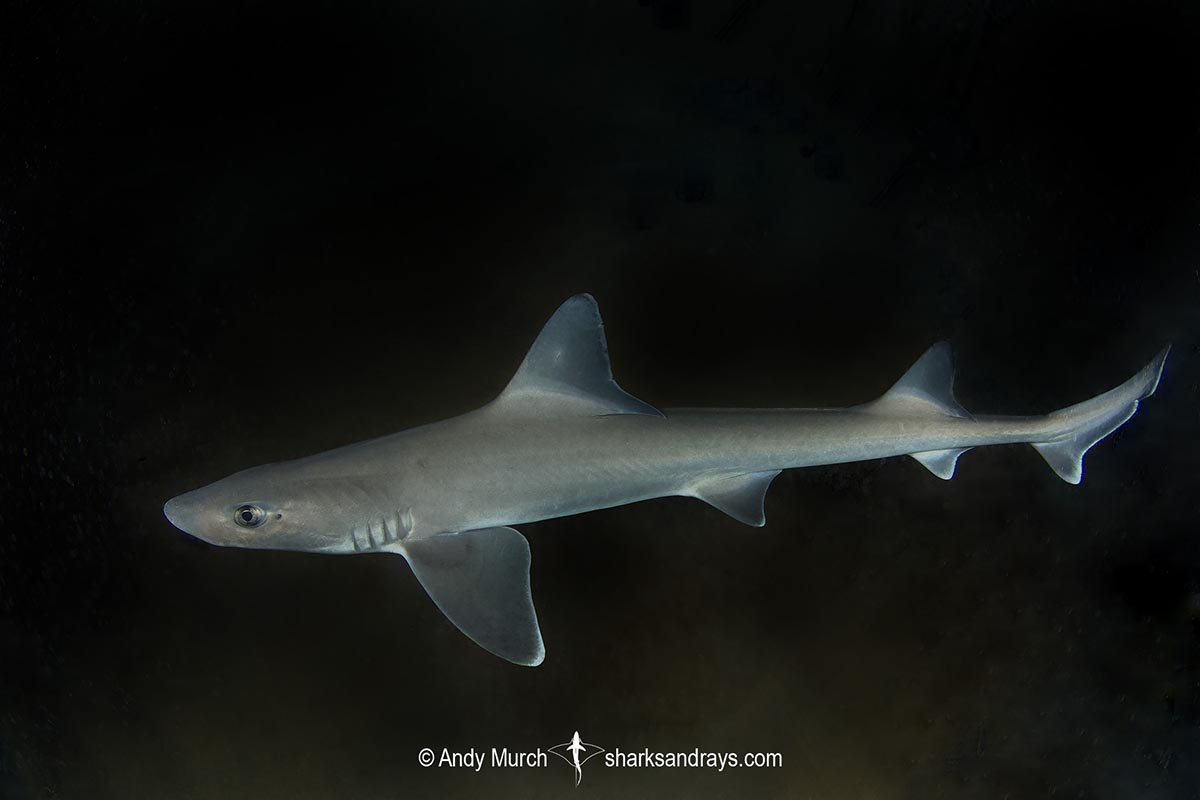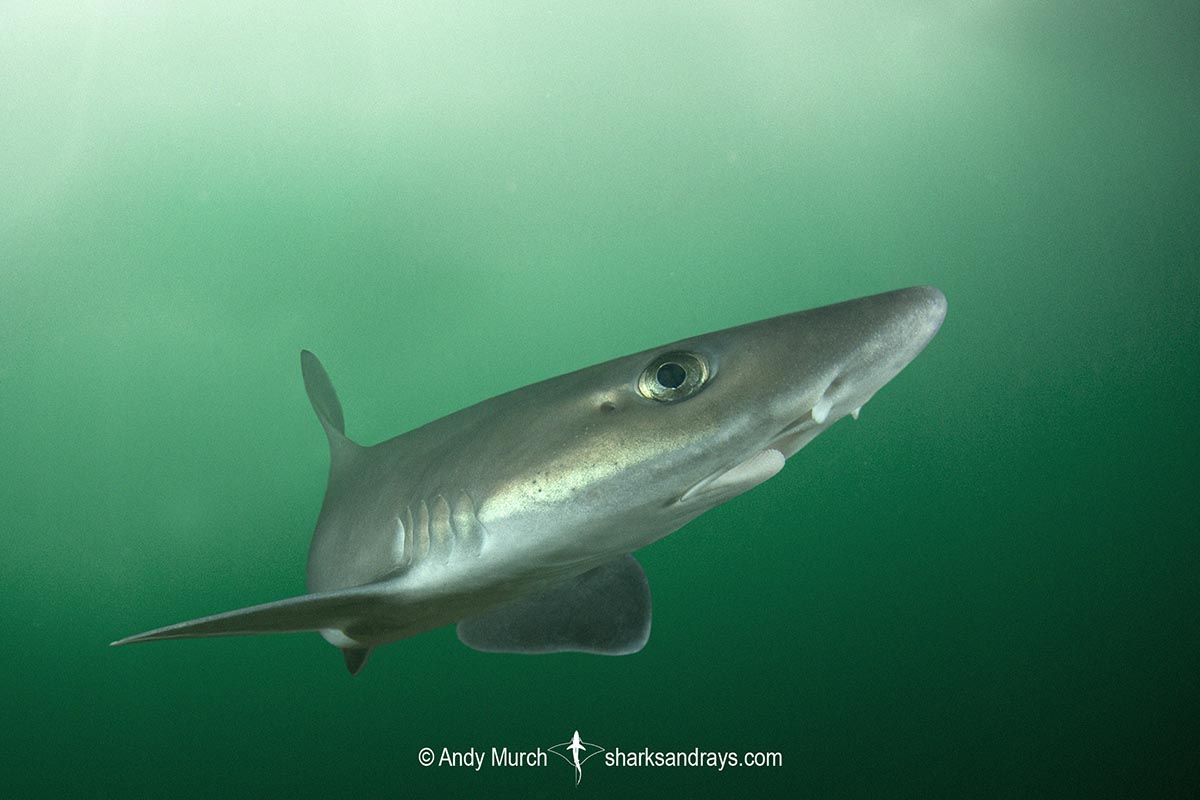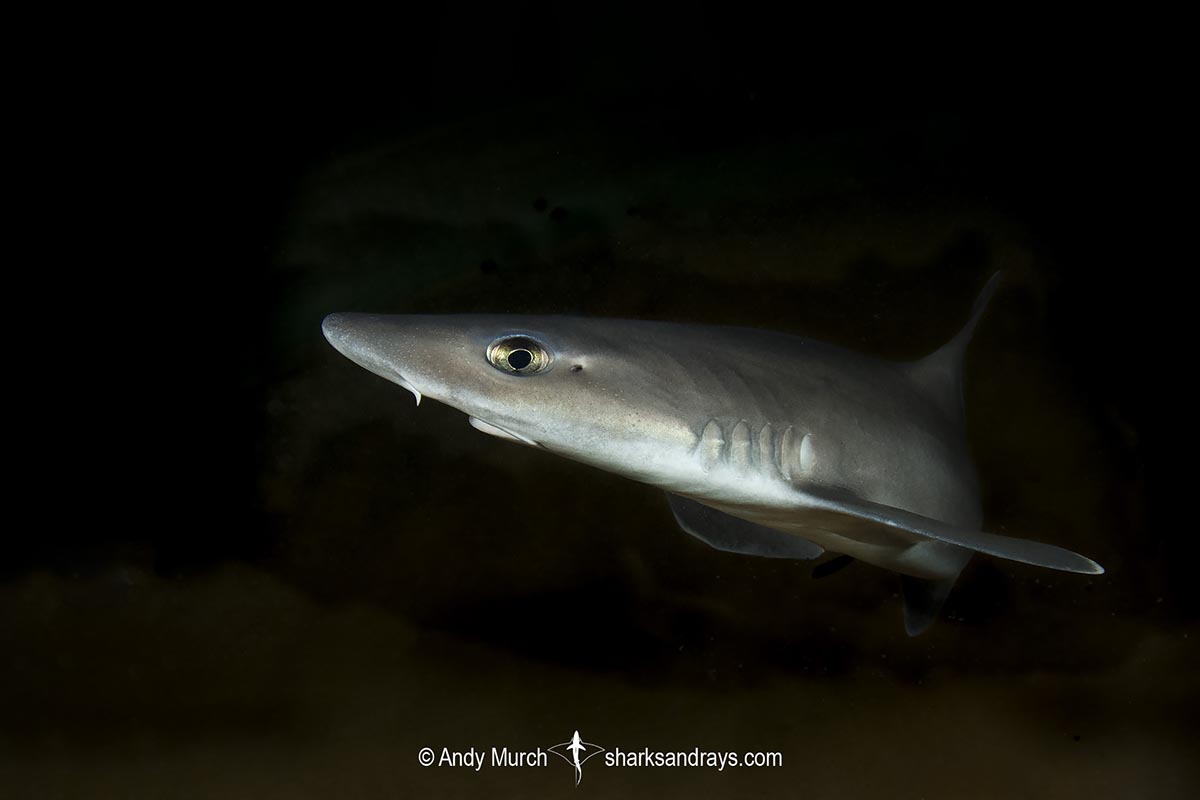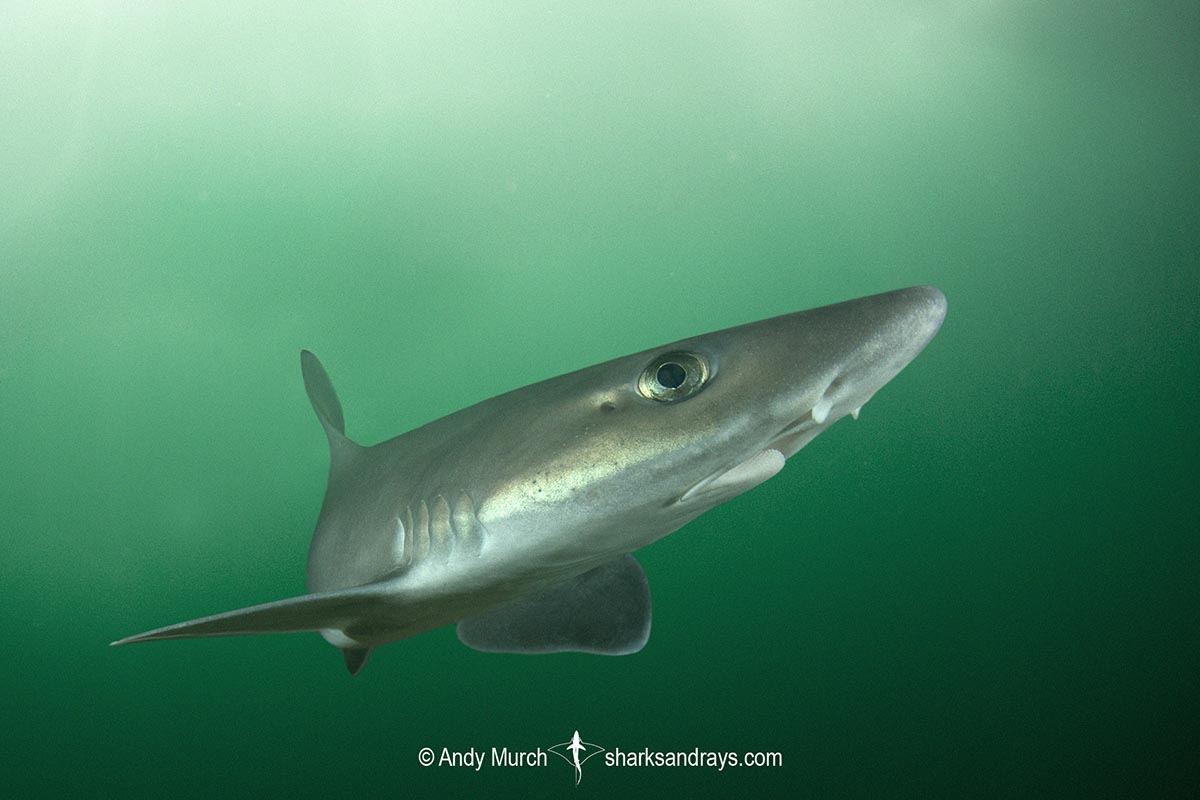Common names
Dusky Smoothhound Shark, Smooth Dogfish.
Binomial
Mustelus canis.
Synonyms
Allomycter dissutus, Mustelus canis canis, Mustelus canis insularis, Squalus canis.
Identification
Body slender. Snout fairly long and pointed. Upper labial furrows noticeably longer than lower. Small, visible spiracle behind eye. First dorsal fin origin over pectoral fin free rear tip. Second dorsal fin much larger than anal fin. Lower caudal lobe distinct, with a rounded tip. Dorsal coloration olive-grey or grey-brown. Fins usually dusky with white tips and posterior margins.
Size
Maximum length 152cm. Size at birth 28-39cm.

Conservation Status
NEAR THREATENED
The dusky smoothhound is a relatively abundant species that is taken in commercial trawl, gillnet, and longline fisheries and by recreational line fishermen in considerable numbers.
Stock assessments in the northwest Atlantic indicate a stable or increasing, but there are intense, poorly managed fisheries further south. In Venezuela the dusky smoothound population has been reduced by 50–79% since the 1990s.

Habitat
A temperate / sub-tropical species usually inhabiting shallow muddy or sandy bays and estuaries. Island subspecies in some parts of the Caribbean are found in much deeper water; down to 808m.
Distribution
The dusky smoothhound shark has a fragmented range along the western Atlantic. In the north, it occurs from Canada where it is seen very rarely, down to Florida, as well as throughout the Gulf of Mexico and the Caribbean Sea, southward to Venezuela. In the southern hemisphere it occurs from southern Brazil to northern Argentina.
Reproduction
A viviparous species with yolk-sac placenta. 10-20 pups per litter. Gestation is approximately 10 months. Reproductive cycle is annual.
Diet
Predates heavily on crustaceans (shrimps, crabs, and lobsters) but will also eat small bony fishes if readily available.
Behavior
In North America, smooth dogfish spend the summers in the north; from Chesapeake to New England. Once temperatures begin to drop in the fall, they move further south, wintering off South Carolina to Central California, returning in mid May to their summer hunting and breeding grounds.
Reaction to divers
Rarely seen by divers but likely very shy due to its small size.
Diving logistics
I am not aware of any specific spots where dusky smoothhounds can be reliably encountered by divers or snorkelers but I suspect that they are probably fairly easy to attract on snorkel by baiting in sheltered, shallow bays between Washington D.C. and southern New England, wherever calm clear water can be found.
What’s new
View our full list of updates
Similar species
Gulf Smoothhound Shark Difficult to distinguish in the field. Differs in having a slightly more pointed snout and slightly more narrowly rounded lower caudal lobe. Tooth and denticle shape are definitive traits if closer examination is possible.
Narrowfin Smoothhound Shark Distinguished by its more distinct ‘hooked’ lower caudal lobe with a pointed tip.


